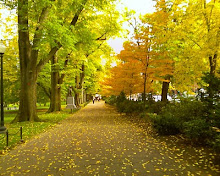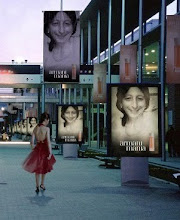A new section of the
Charles River
path system opened recently, a rail-to-trail walkway following the route of what was once the
Boston & Worcester Railroad's
Newton Lower Falls Branch. This very short branch, a mere 1.2 miles long, branched off from the mainline at Riverside Station. The river in Riverside is the
Charles River, which meanders in all directions while forming the boundary between Newton and Wellesley, Massachusetts.
 |
The Newton Lower Falls Branch followed the east bank of the Charles River,
only a bit over a mile east of the Boston & Worcester Main Line |
The rail lines in Massachusetts tending to branch out to serve the mills. And the mills would locate themselves along the rivers, particularly at waterfalls, where the power of the falling water could be harnessed.
So, it proved economically worthwhile to construct this diminutive branchline along the east bank of the Charles, and curving to a river crossing and entering into a village simply called Lower Falls.
 |
The Charles River, as seen from the
rail bridge near Lower Falls |
While the freight service was unremarkable in itself, what made this branch special was its passenger service. In 1867, the Boston & Worcester merged with two other lines to become the
Boston & Albany, spanning the state and connecting to the mighty
New York Central and Hudson River Railroad, which stretched west to Chicago. While trains running overnight between Boston and Chicago ran on the mainline, the Lower Falls branch had a mere shuttle service, connecting Riverside Station on the mainline with the branch's namesake village.
 |
Electric car #01, the "Ping Pong"
(Collection of Norman D. Clark) |
With the advent of electric power came the widespread use of electric trolley cars and interurbans in the late 1880s and 1890s. This inspired the Boston & Albany to eliminate the clumsy use of a locomotive and passenger cars to travel so short a distance. In 1900 they converted a passenger car into their own version of an interurban, and gave it the number "01."
Since all it did, day in and day out, was shuttle back and forth this little 1.2-mile trip, it was nicknamed the "Ping Pong."
 |
| (Collection of Roy Lannigan) |
In 1930, the "Ping Pong" was retired, and a single locomotive and passenger car. Eventually, passenger service ended in 1957. Freight service continued for a couple of decades.
Now with rail service a distant memory, the one section of the line, between Washington Street in Wellesley and Concord Street in Newton, had become a walking path. A wood deck bridge sets on the steel of the rail bridge over the Charles.
 |
| In Wellesley, the path transitions from concrete to stone dust as one approaches the Charles. |
 |
| The path crosses the Charles River reusing the rail bridge. |
 |
| The wood deck and railings of the footbridge. |
 |
| Approaching the bridge from the Newton side. |
 |
| Looking north across Concord Street: the rails still remain, overgrown. |
References:
Humphrey, Thomas J. and Clark, Norman D, "Boston's Commuter Rail: Section Section," Boston Street Railway Association, Inc., 1986.
Karr, Ronald Dale, "The Rail Lines of Southern New England: A Handbook of Railroad History," Branch Line Press, 1994.
Except as noted, all photographs by Rachel Burckardt, Sept. 27, 2014.
 Today, though Saturday, I was heading to my office. If I get off the train at Charles Street, I have the opportunity to pass through the park on my way. In the morning sun, the Public Garden proved quite photogenic, even with bare trees, no snow, and an unfrozen lagoon.
Today, though Saturday, I was heading to my office. If I get off the train at Charles Street, I have the opportunity to pass through the park on my way. In the morning sun, the Public Garden proved quite photogenic, even with bare trees, no snow, and an unfrozen lagoon. 

























































